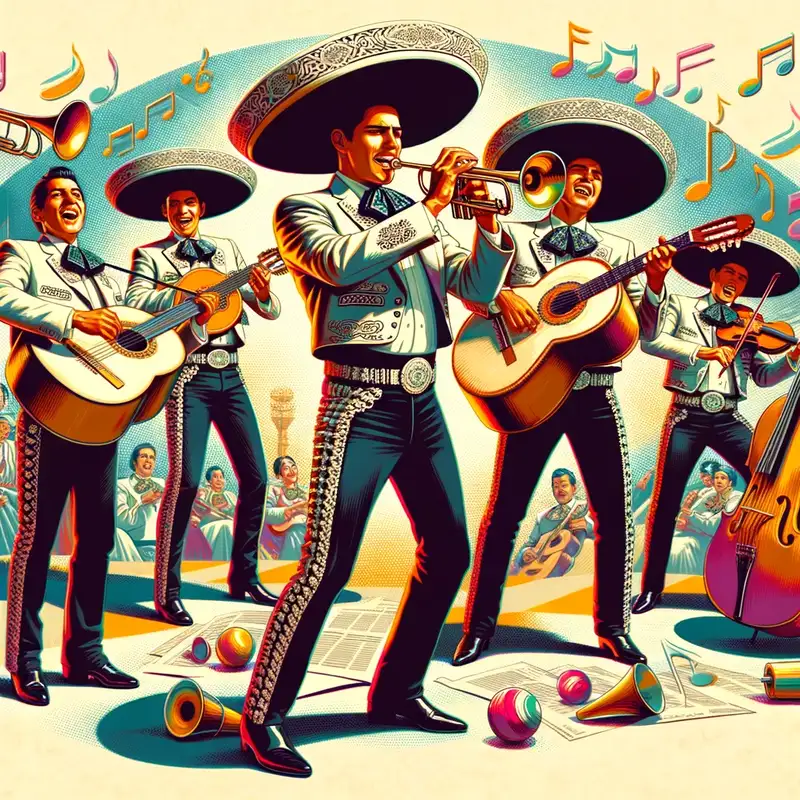Mariachi

Recognized by its energetic rhythms, emotive lyrics, and iconic ensembles, Mariachi music has its roots deep in Mexican history. And it has become an emblematic representation of the country on the global stage.
Table of Contents
Origins and Historical Context
- Pre-colonial Roots: While the exact origins are debated, some elements of Mariachi trace back to indigenous Mexican cultures. Instruments used by native groups, such as drums and flutes, had roles in early Mariachi performances.
- Spanish Influence: The Spanish colonizers introduced stringed instruments like the violin and guitar to the region. Over time, these European imports meshed with indigenous sounds, laying the groundwork for what would become Mariachi.
- Cocula, Jalisco: The state of Jalisco, particularly the town of Cocula, is often hailed as the birthplace of Mariachi. By the 19th century, the familiar form of Mariachi groups had started to emerge in this region.
Key Instruments
- Violins: These provide melodic lines and often take the lead in Mariachi ensembles.
- Trumpets: Introduced in the 20th century, they add a bright, brassy tone to the ensemble.
- Guitar: Helps establish rhythm and harmony.
- Vihuela: A high-pitched, round-backed guitar that plays rhythm.
- Guitarrón: A large, deep-voiced guitar that provides the bass line.
Traditional Attire
The traje de charro, or charro suit, is the traditional attire worn by Mariachi musicians. It consists of intricately decorated pants, jackets, and wide-brimmed sombreros. Silver buttons, embroidery, and other embellishments reflect the outfit’s ranchero origins and the spirit of the Mexican cowboy or “charro.”
Styles & Themes
- Sones: Traditional rhythmic songs that often have a faster tempo.
- Rancheras: Evoking the rural landscapes of Mexico, these songs are often about love, patriotism, and nature.
- Corridos: Ballads that narrate stories, often of historical or political significance.
- Huapangos: With intricate rhythms, these songs often involve themes of love and courtship.
- Boleros: Romantic songs with a slower tempo.
Significance and Evolution
- Cultural Identity: Mariachi became a key element in celebrations, ceremonies, and festivals.
- Golden Age of Mexican Cinema: The 1930s to 1950s saw Mariachi music gain immense popularity, partly due to its presence in Mexican films. Icons like Jorge Negrete and Pedro Infante played pivotal roles in this.
- Worldwide Recognition: With globalization, Mariachi reached global audiences. It’s not uncommon to find Mariachi bands in places as diverse as Japan or Europe.
- UNESCO Recognition: In 2011, UNESCO recognized Mariachi as an Intangible Cultural Heritage.